Embedded systems and the Internet of Things (IoT) are complementary technologies that work together to create intelligent and interconnected systems. Embedded systems are specialized computer systems designed to perform specific tasks within devices.
While IoT involves connecting these devices to the internet to enable data exchange and communication. The integration of embedded systems with IoT allows for seamless connectivity, real-time data collection and analysis, and enhanced automation and control.
In this article, we will tell you how Embedded system and IoT devices works together. You will know its procedure, feature, and advantages. Embedded system also help businesses to grow their market.
Features
The following are the features that you must know about Embedded system and IoT devices.
- Sensor Integration: Embedded systems in IoT devices incorporate various sensors to collect data from the surrounding environment. These sensors can include temperature, humidity, motion, or proximity sensors, enabling devices to gather real-time information.
- Communication Capabilities: Embedded systems within IoT devices are equipped with wireless communication technologies such as Wi-Fi, Bluetooth, or cellular connectivity. This allows devices to transmit data to other devices or cloud platforms for analysis and decision-making.
- Real-time Data Processing: Embedded systems process data locally within the device, ensuring real-time response and reducing reliance on cloud-based processing. This enables devices to perform actions or trigger events based on immediate data analysis.
- Remote Monitoring and Control: The integration of embedded systems with IoT facilitates remote monitoring and control of devices. Users can access and manage devices from anywhere, enabling efficient maintenance, troubleshooting, and control over a network connection.
- Scalability and Interoperability: Embedded systems and IoT provide a scalable framework, allowing for the integration of multiple devices and systems. This enables seamless interoperability and communication between different devices, leading to a cohesive and interconnected network.
Procedure
The collaboration between IoT and embedded systems involves a series of procedures that enable seamless communication, data collection, and control. Here’s a step-by-step explanation of how embedded system are used in IoT devices:
- Sensor Data Collection: IoT devices with embedded systems incorporate various sensors to collect data from the surrounding environment. These sensors can include temperature, humidity, motion, light, or other relevant parameters. The embedded systems within the devices interface with these sensors and collect data from them.
- Data Processing and Local Storage: The embedded systems process the collected sensor data locally within the device. They perform computations, filtering, or other necessary operations to extract meaningful information from the raw data. The processed data is then stored locally in the embedded system’s memory or storage. These
- Connectivity and Data Transmission: Embedded systems in IoT devices are equipped with wireless communication technologies such as Wi-Fi, Bluetooth, or cellular connectivity. These connectivity options allow the devices to transmit the collected and processed data to other devices or cloud platforms for further analysis. The embedded systems establish a connection with the desired network or server and transmit the data securely.
- Data Analysis and Decision-making: The transmitted data is received by IoT platforms or cloud-based systems, where it undergoes further analysis and processing. Advanced analytics algorithms or machine learning models can be applied to the data to extract valuable insights. This analysis helps in making informed decisions, triggering appropriate actions, or generating alerts or notifications.
- Control and Feedback Loop: Based on the analysis and decisions made at the IoT platform, commands or actions can be sent back to the embedded systems within the devices. These commands can trigger specific actions in the device or adjust its behavior. For example, based on the analysis of sensor data, the embedded system may adjust the temperature in a smart thermostat or activate a security alarm system.
- User Interface and Interaction: IoT devices with embedded systems provide a user interface through which users can interact with the device and monitor its status. This can be a mobile application, a web portal, or a dedicated control panel. The user interface allows users to remotely monitor and control the devices, access real-time data, configure settings, or receive alerts and notifications.
- Scalability and Interoperability: The integration of IoT and embedded systems allows for scalability and interoperability. Multiple devices with embedded systems can be connected to form a cohesive network, where they can communicate and share data seamlessly
Advantages
Being a leading embedded software company, Adequate Infosoft inculcate skilled and experienced embedded developers. The main advantages will highlight the connectivity between embedded system and IoT devices and its importance.
- Improved Efficiency: The integration of embedded systems with IoT leads to enhanced automation and control, optimizing processes and improving overall efficiency in various domains such as manufacturing, transportation, and agriculture.
- Real-time Monitoring and Decision-making: Embedded systems in IoT devices enable real-time data collection and analysis, allowing for immediate monitoring and decision-making. This enhances situational awareness and enables timely actions. The popular example of embedded system and IoT device is, Embedded systems that are integrated into smart thermostats to control temperature and gather data from various sensors such as temperature, humidity, and occupancy sensors.
- Cost Savings: The combination of embedded systems and IoT can result in cost savings by optimizing resource utilization, reducing energy consumption, and enabling predictive maintenance.
- Enhanced User Experience: IoT devices with embedded systems provide personalized and seamless user experiences. Users can remotely monitor and control devices, access real-time data, and customize device settings according to their preferences.
- Innovation and Connectivity: Embedded systems and IoT promote innovation by providing a framework for creating new applications and services. They facilitate connectivity between devices and systems, enabling the development of smart environments and ecosystems.
Embedded systems and IoT work together to enable connectivity, real-time data processing, remote control, and enhanced efficiency. The integration of these technologies offers numerous advantages, ranging from improved decision-making and cost savings to enhanced user experiences and innovative solutions.
The post How Embedded System and IoT works together? appeared first on .
Tags:
- Iot Software Development
- Software Development Company
- embedded systems and internet of things
- Embedded systems in IoT devices
- How Embedded System and IoT works together
- iot embedded systems examples
- use of embedded systems in iot

 .NET MAUI Development
.NET MAUI Development
 Xamarin Application Development
Xamarin Application Development
 React Native App Development
React Native App Development
 iOS Application Development
iOS Application Development
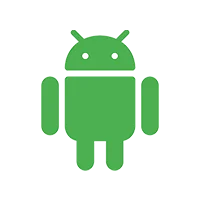 Android Application Development
Android Application Development
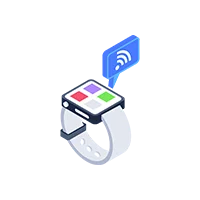 Android Wear App Development
Android Wear App Development
 Ionic Development
Ionic Development
 iBeacon Application Development
iBeacon Application Development
 Universal Windows Platform (UWP)
Universal Windows Platform (UWP)
 Kotlin Application Development
Kotlin Application Development
 Swift Application Development
Swift Application Development
 Flutter Application Development
Flutter Application Development
 PWA Application Development
PWA Application Development
 .NET Application Development
.NET Application Development
 .NET Nuke Development
.NET Nuke Development
 Microsoft Dynamics CRM
Microsoft Dynamics CRM
 Microsoft Small Business Solution
Microsoft Small Business Solution
 VB .NET Development
VB .NET Development
 C# Development
C# Development
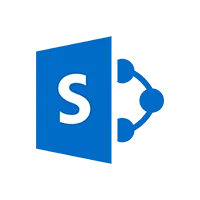 Sharepoint Migration
Sharepoint Migration
 Sharepoint Development
Sharepoint Development
 ASP.NET Core Development
ASP.NET Core Development
 ASP.NET Development
ASP.NET Development
 ASP.NET MVC Development
ASP.NET MVC Development
 Kentico CMS
Kentico CMS
 Umbraco CMS
Umbraco CMS
 AJAX Development
AJAX Development
 Agile Development
Agile Development
 Microsoft Bot
Microsoft Bot
 Microsoft Blazor
Microsoft Blazor
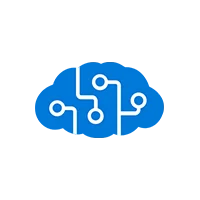 Microsoft Azure Cognitive
Microsoft Azure Cognitive

 Mean Stack Development
Mean Stack Development
 Vue JS Development
Vue JS Development
 Javascript Development
Javascript Development
 Angular JS Development
Angular JS Development
 Next JS development
Next JS development
 Java Development
Java Development
 Python Development
Python Development
 Django Development
Django Development
 Cherrypy Development
Cherrypy Development
 NodeJS Development
NodeJS Development
 Laravel Development
Laravel Development
 CodeIgniter Development
CodeIgniter Development
 Zend Development
Zend Development
 Ruby on Rails Development
Ruby on Rails Development
 CakePHP Development
CakePHP Development
 PHP Website Development
PHP Website Development
 Symfony Development
Symfony Development
 Drupal Development
Drupal Development
 Joomla Development
Joomla Development
 Wordpress Development
Wordpress Development
 Offshore Software Development
Offshore Software Development
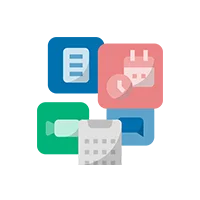 Custom Application Development
Custom Application Development
 Full Stack Development
Full Stack Development
 AI & Machine Learning
AI & Machine Learning
 Custom CRM Solutions
Custom CRM Solutions
 Flask Software Development
Flask Software Development
 Electron JS Development
Electron JS Development
 ChatGPT Development
ChatGPT Development
 Magento Development
Magento Development
 Magento 2.0 Development
Magento 2.0 Development
 Magento Enterprise
Magento Enterprise
 Shopping Cart Development
Shopping Cart Development
 Prestashop Development
Prestashop Development
 Shopify Development
Shopify Development
 Open Cart Development
Open Cart Development
 WooCommerce Development
WooCommerce Development
 BigCommerce Development
BigCommerce Development
 NopCommerce Development
NopCommerce Development
 Virto Commerce Development
Virto Commerce Development
 AspDotNetStorefront Development
AspDotNetStorefront Development
 RaspBerry Pi
RaspBerry Pi
 Firmware Software Development
Firmware Software Development
 ESP 32 Software Development
ESP 32 Software Development
 Embedded Development
Embedded Development
 Internet of Things
Internet of Things
 Nordic Development
Nordic Development
 HTML 5
HTML 5
 UI/UX Design
UI/UX Design
 Graphic Design
Graphic Design
 Adobe Photoshop
Adobe Photoshop
 XML Application Development
XML Application Development
 Cloud Computing Solutions
Cloud Computing Solutions
 Azure Cloud App Development
Azure Cloud App Development
 AWS Development
AWS Development
 Google Cloud Development
Google Cloud Development
 SQL Programming Development
SQL Programming Development
 MySQL Development
MySQL Development
 MongoDB Development
MongoDB Development
 Big Data
Big Data
 Robotic Process Automation
Robotic Process Automation
 Social Media Marketing
Social Media Marketing
 Search Engine Optimization
Search Engine Optimization
 QA Testing
QA Testing
 Software Testing
Software Testing
 Software Security
Software Security
 Maintenance And Support
Maintenance And Support
 I.T. Consulting Services
I.T. Consulting Services
 Business Intelligence
Business Intelligence
 YII Development
YII Development
 Data Analysis
Data Analysis
 Alexa Skills Development
Alexa Skills Development
 On Demand App for Mobile repairing services
On Demand App for Mobile repairing services
 On Demand App for Car Service Booking
On Demand App for Car Service Booking
 On Demand App for Cleaning Services
On Demand App for Cleaning Services
 On Demand App for Pharmacy
On Demand App for Pharmacy
 On Demand Dedicated Developers
On Demand Dedicated Developers





Leave a Reply